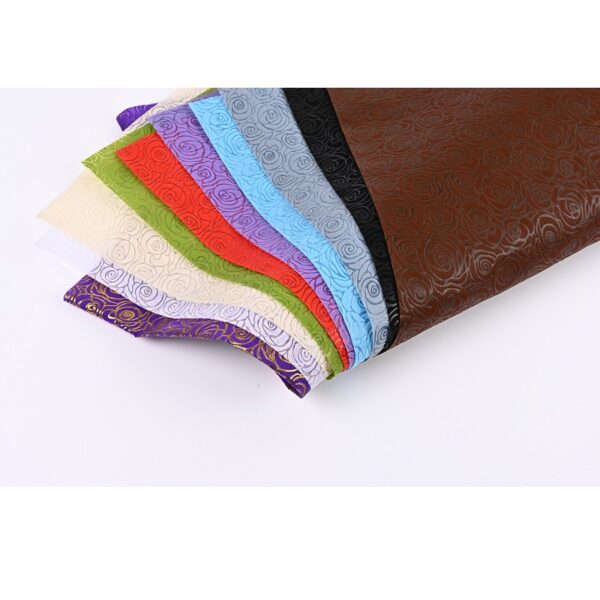Spunbond nonwoven fabric is generally considered to be cost-effective compared to other types of nonwoven materials.
Here’s how it compares to some commonly used nonwoven fabric types:
Meltblown Nonwoven Fabric: Meltblown fabric is another popular nonwoven material produced using a different manufacturing process. While both spunbond and meltblown fabrics are made from thermoplastic polymers, the meltblown process creates finer fibers and a denser structure. Meltblown fabric is often used for its high filtration efficiency. However, it tends to be more expensive than spunbond fabric due to the additional complexity and precision required in the manufacturing process.
Needle-punched Nonwoven Fabric: Needle-punched nonwoven fabric is produced by mechanically interlocking fibers using barbed needles. It is commonly used in applications where strength and resilience are important, such as geotextiles and automotive interiors. Needle-punched fabric typically requires more processing steps and specialized equipment, making it relatively more expensive than spunbond fabric.
Spunlace Nonwoven Fabric: Spunlace (also known as hydroentangled) nonwoven fabric is produced by entangling fibers using high-pressure water jets. It is known for its softness and high absorbency, which makes it suitable for applications like wipes and medical products. Spunlace fabric tends to be more expensive than spunbond fabric due to the additional processing steps and the use of water jets.
In general, spunbond nonwoven fabric is considered cost-effective because it offers a good balance between performance and affordability. Its production process is relatively straightforward and requires fewer processing steps compared to some other nonwoven fabrication methods. Additionally, the use of thermoplastic polymers like polypropylene, which is readily available and cost-efficient, contributes to the cost-effectiveness of spunbond fabric.
However, it’s important to note that the cost-effectiveness of nonwoven fabrics can vary depending on factors such as raw material costs, production volume, desired properties, and specific application requirements. Therefore, it is always recommended to evaluate the overall cost-benefit ratio and consider the specific needs of the intended application when selecting a nonwoven material.
What are some specific applications where spunbond nonwoven fabric is commonly used?
Spunbond nonwoven fabric finds application in various industries due to its versatility and advantageous properties.
Here are some specific applications where spunbond nonwoven fabric is commonly used:
Disposable Hygiene Products: Spunbond nonwoven fabric is widely used in the production of disposable hygiene products such as diapers, baby wipes, feminine hygiene products, and adult incontinence products. It provides a soft and breathable outer layer while offering strength and fluid resistance.
Medical and Healthcare: In the medical field, spunbond nonwoven fabric is utilized for a range of applications. It is used in surgical gowns, drapes, and masks due to its barrier properties and breathability. Spunbond fabric is also used in medical wipes, bandages, shoe covers, and sterilization wraps.
Geotextiles: Spunbond nonwoven fabric is commonly employed in geotextile applications. It is used for erosion control, soil stabilization, drainage systems, and separation layers in civil engineering and construction projects. Spunbond geotextiles provide strength, filtration, and protection in various geotechnical applications.
Filtration Media: Spunbond nonwoven fabric is used in air filters, liquid filters, and automotive filters. spunbond nonwoven fabric It allows for effective particulate filtration while maintaining airflow. The fabric’s strength and resistance to chemicals make it suitable for capturing particles in filtration applications.
Packaging: Spunbond nonwoven fabric is used in packaging applications such as tote bags, agricultural covers, protective packaging materials, and wrapping materials. It provides durability, tear resistance, and breathability, depending on the specific requirements of the packaging application.
Industrial Applications: Spunbond nonwoven fabric finds use in various industrial applications. It is used as insulation material, protective clothing, automotive interiors, and in the manufacturing of composites. The fabric’s strength, lightweight nature, and chemical resistance make it suitable for diverse industrial applications.
Agriculture: Spunbond nonwoven fabric is utilized in agriculture for crop protection, weed control, and greenhouse coverings. It offers UV resistance, water permeability, and durability, contributing to improved crop yield and protection against pests and environmental factors.
These are just a few examples of the many applications where spunbond nonwoven fabric is commonly used. Its versatility, cost-effectiveness, and desirable properties make it a preferred choice in various industries and sectors.

